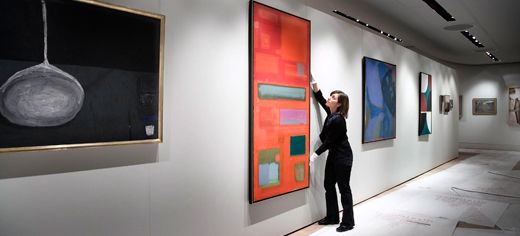
When it comes to judging art, beauty may not just be in the eye of the beholder, according to a study from the University of Leeds.
The research challenges the idea that what people value in art is largely what they are used to, or that people will come to like any image if they see it enough times.
Instead, the study’s findings suggest that increased exposure to art works does not necessarily make people like them more and that the quality of an art work remains at the heart of its evaluation.
Dr Aaron Meskin from the University of Leeds, who co-led the study, explained: “People have always questioned how curators and critics judge art work or arrive at a consensus about masterpieces. We wanted to see if it’s true that the more times someone is exposed to artwork, the more they prefer it, and that people will come to like whatever images they are exposed to, good or bad.”
The team of researchers at the University of Leeds exposed study groups to two sets of paintings, for different lengths of time, before asking them to express a degree of liking. The two artists under the spotlight were English Pre-Raphaelite painter, John Everett Millais, and American painter, Thomas Kinkade.
Co-lead author Professor Matthew Kieran, said: “Choosing Millais’ and Kinkade’s landscapes made for a natural contrast, with Millais’ work representing ‘good art’ having previously been described as ‘misty evocations’, whereas Kinkade’s work, which one reviewer dubbed ‘a kitsch crime against aesthetics’, represents ‘bad art’.”
The findings revealed that people responded differently to Kinkade paintings than to Millais’ paintings when faced with varying levels of exposure.
“The fact that Kinkade’s paintings were liked less and Millais’ were liked more after exposure suggests that quality, and not just familiarity, remains in the picture,” continued Professor Kieran.
Mark Phelan from Lawrence University in Wisconsin, who worked with the team from the University of Leeds to analyse the results, added: “This work constitutes more than a grudge match between high and popular art. At issue is the role that artistic quality plays in determining our aesthetic tastes. When we make evaluative judgements of art works, we continue to be sensitive to what is good or bad.”
Over 100 students from the University of Leeds took part in the experiment. Midway through classes, an experimental group was shown images of paintings - some once, some four or five times - whereas a control group was not. During a ratings phase, both groups were shown all images and asked to express how much they liked each painting.
The research replicated the basic pattern used by psychologist James Cutting in 2003, who briefly exposed undergraduate psychology students to less-known Impressionist paintings and found that exposure significantly increased preferences for the works.
The team at the University of Leeds, who questioned these findings because all the paintings used in Cutting’s study were deemed of high artistic quality, set about testing whether increased exposure to both ‘good’ and ‘bad’ art would determine peoples’ preferences.
The findings, Mere Exposure to Bad Art, are published today in the British Journal of Aesthetics by Oxford University Press.
Dr Aaron Meskin is available for interview. Contact: Rachel Barson, Press Officer, University of Leeds, T: +44 113 343 2060 or E: r.barson@leeds.ac.uk